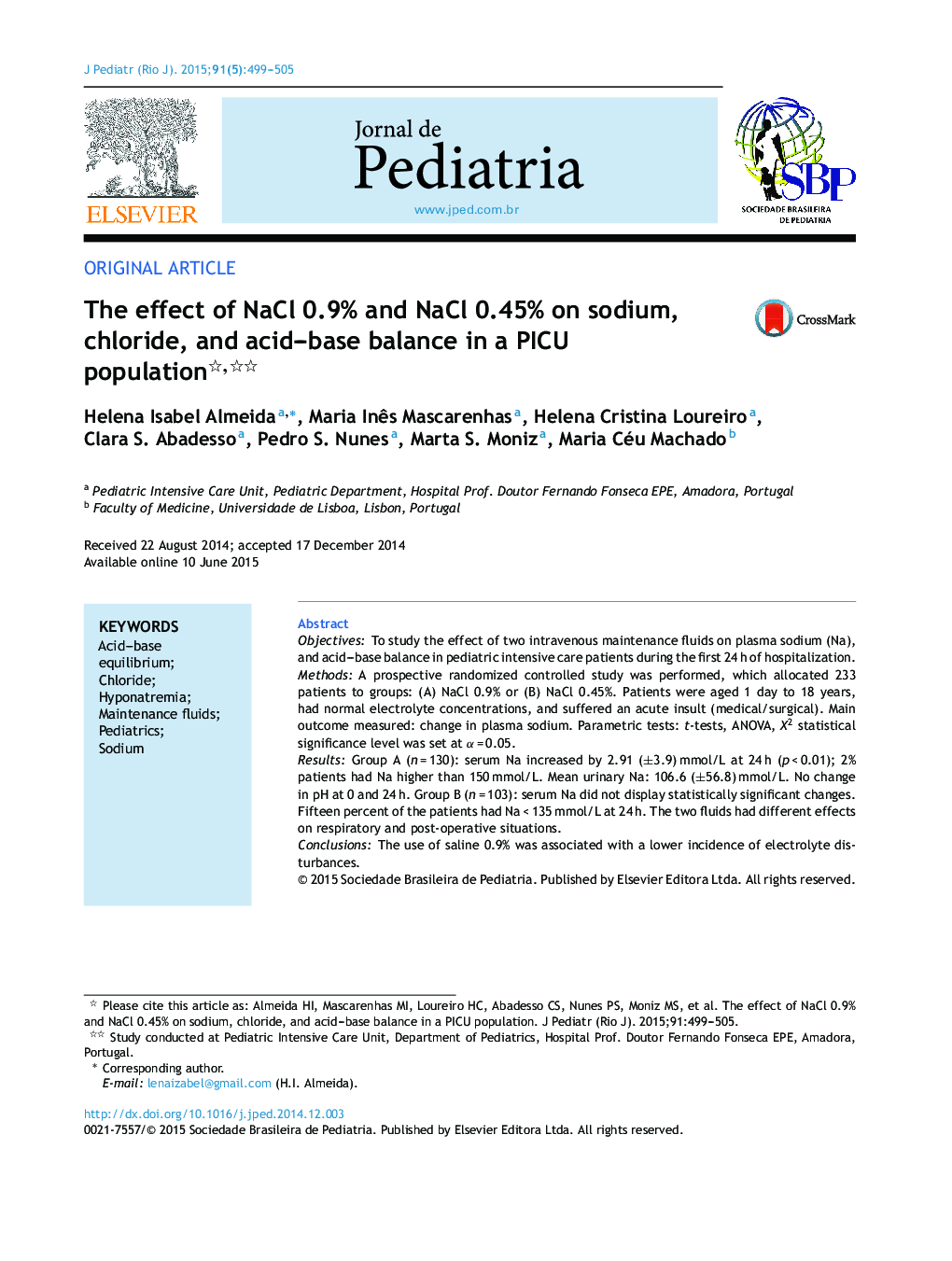| کد مقاله | کد نشریه | سال انتشار | مقاله انگلیسی | نسخه تمام متن |
|---|---|---|---|---|
| 4153906 | 1273681 | 2015 | 7 صفحه PDF | دانلود رایگان |

ObjectivesTo study the effect of two intravenous maintenance fluids on plasma sodium (Na), and acid–base balance in pediatric intensive care patients during the first 24 h of hospitalization.MethodsA prospective randomized controlled study was performed, which allocated 233 patients to groups: (A) NaCl 0.9% or (B) NaCl 0.45%. Patients were aged 1 day to 18 years, had normal electrolyte concentrations, and suffered an acute insult (medical/surgical). Main outcome measured: change in plasma sodium. Parametric tests: t-tests, ANOVA, X2 statistical significance level was set at α = 0.05.ResultsGroup A (n = 130): serum Na increased by 2.91 (±3.9) mmol/L at 24 h (p < 0.01); 2% patients had Na higher than 150 mmol/L. Mean urinary Na: 106.6 (±56.8) mmol/L. No change in pH at 0 and 24 h. Group B (n = 103): serum Na did not display statistically significant changes. Fifteen percent of the patients had Na < 135 mmol/L at 24 h. The two fluids had different effects on respiratory and post-operative situations.ConclusionsThe use of saline 0.9% was associated with a lower incidence of electrolyte disturbances.
ResumoObjetivoEstudar o efeito de dois fluidos de manutenção intravenosos sobre o sódio (Na) plasmático e o equilíbrio ácido-base em pacientes de terapia intensiva pediátrica durante as primeiras 24 horas de internação.MétodosFoi realizado um estudo controlado randomizado prospectivo. Alocamos aleatoriamente 233 pacientes para os grupos: (A) NaCl a 0,9% ou (B) NaCl a 0,45%. Os pacientes com 1 dia a 18 anos de idade apresentavam concentrações normais de eletrólitos e sofriam de insulto agudo (médico/cirúrgico). Principal resultado: variação no sódio plasmático. Testes paramétricos: teste t, ANOVA, qui-quadrado. O nível de relevância estatística foi estabelecido em α = 0,05.ResultadosGrupo A (n = 130): o Na sérico aumentou 2,91 (±3,9) mmol L−1 em 24 h (p < 0,01); 2% dos pacientes apresentaram Na acima de 150 mmol L−1. Concentração média de Na na urina: 106,6 (±56,8) mmol L−1. Sem alteração no pH em 0 e 24 h. Grupo B (n = 103): o Na sérico não apresentou alterações estatisticamente significativas. 15% dos pacientes apresentaram Na < 135 mmol L−1 em 24 h. Os dois fluidos tiveram efeitos diferentes sobre as situações respiratória e pós-operatória.ConclusãoO uso de solução fisiológica a 0,9% foi associado à menor incidência de distúrbios eletrolíticos.
Journal: Jornal de Pediatria - Volume 91, Issue 5, September–October 2015, Pages 499–505